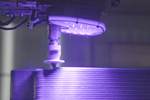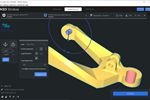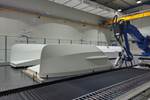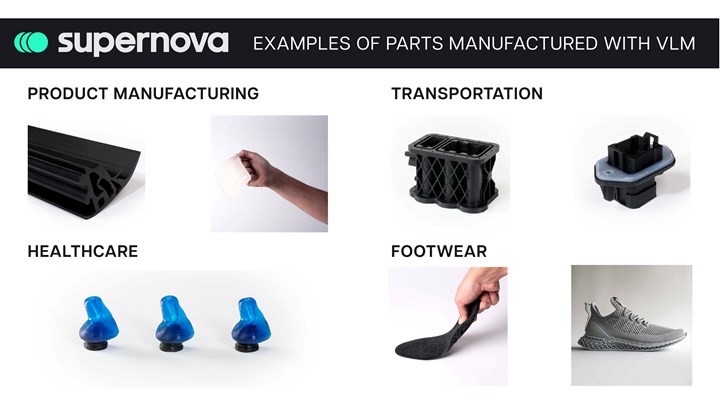BCN3D forms Supernova for VLM business growth
An independent entity, Supernova will enhance materials development and hardware industrialization for the viscous lithography manufacturing process, which can take fillers or fiber reinforcement for elevated product development.
Share
3D printing solutions manufacturer BCN3D (Barcelona, Spain) announces that it has spun off its viscous lithography manufacturing (VLM) 3D printing business unit into a completely independent entity, Supernova. The new company, incorporated in the U.S., will maintain headquarters in Austin, Texas and Barcelona, Spain.
Supernova’s vision is to elevate products through advanced technologies, based on its VLM technology. With the ability to process very high-viscous resins — more than 100 times higher than conventional 3D printers, according to BCN3D) — Supernova is able to add fillers or modifiers into the formulations, something not possible when working with low-viscous resins. This includes the ability to add chopped fiber reinforcement — or longer continuous fibers, if used in extrusion-based systems.
Importantly, the lamination process that is used by VLM technology helps to better align the chopped fibers as well, increasing the mechanical performance in the alignment direction, in addition to adding strength and stiffness. VLM has garnered interest in automotive, aerospace, manufacturing, consumer goods (e.g., footwear), defense and more.
BCN3D says its purpose is to make industrial additive manufacturing (AM) more accessible. The company focuses on enabling engineers to enhance
product design through functional prototyping and to improve factory operations with tooling, jigs and fixtures. To be successful, each of those visions will require a distinct business model, company structure and a laser-focused team. By carving out its VLM business unit into Supernova, BCN3D ensures that each has its own space to flourish in the long term.
Supernova will be led by Roger Antunez as CEO, who previously served as the general manager of BCN3D since 2019. Joining him as a co-founder is Marta Mico, formerly the VLM Head of Business Development at BCN3D. Additionally, Eric Pallares, the former CTO of BCN3D, will join Supernova as a distinguished technologist. The rest of the team will remain at BCN3D, with Pol Domenech, sales director, stepping up as the new general manager.
Under the leadership of its CEO, Xavi M. Faneca, BCN3D will continue to focus on its core business of extrusion-based technologies. The company aims to expand its leadership in the IDEX segment that the company created in 2016, and grow its industrial offering with products like the Omega I60, an all-in-one industrial fused filament fabrication (FFF) 3D printer featuring IDEX technology, an actively heated printing chamber, a large print volume and an architecture ready for high speed.
During the next year, Supernova plans to leverage a Technology Adoption Program to develop applications in key vertical markets. This initiative aims to influence both materials development and the industrialization of hardware systems, ultimately forming a production-ready ecosystem. Beta deployments in customer sites are expected during 2024. In line with these goals, the company will be expanding its R&D teams in both materials and product (or hardware, and software), as well as its business departments.
Related Content
-
Welding is not bonding
Discussion of the issues in our understanding of thermoplastic composite welded structures and certification of the latest materials and welding technologies for future airframes.
-
PEEK vs. PEKK vs. PAEK and continuous compression molding
Suppliers of thermoplastics and carbon fiber chime in regarding PEEK vs. PEKK, and now PAEK, as well as in-situ consolidation — the supply chain for thermoplastic tape composites continues to evolve.
-
Combining multifunctional thermoplastic composites, additive manufacturing for next-gen airframe structures
The DOMMINIO project combines AFP with 3D printed gyroid cores, embedded SHM sensors and smart materials for induction-driven disassembly of parts at end of life.














.jpg;maxWidth=300;quality=90)

